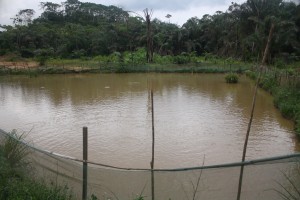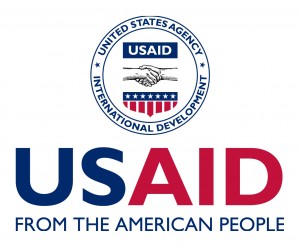Ghana’s Community Resource Management Area (CREMA) program is designed to help those living on the outskirts of national parks to create a buffer for the protected area, largely by reducing illicit activities like hunting and tree-cutting. In theory, the Ghana Wildlife Division (GWD) is supposed to reward these communities for monitoring and losing income from restricted forest use by helping them to develop “alternative livelihood” activities. By combining trainings on activities like fish pond farming and beekeeping with conservation education in these communities, the Wildlife Division hopes that the CREMAs will become self-sustaining entities over time.
In practice, however, the results of the CREMAs around Ankasa Reserve in Ghana’s southwest suggest there are still many barriers to achieving these aims. It is important to note that most of the nine CREMAs around Ankasa have formed within the last five years, so some of the challenges may be attributable to growing pains. Given the formative stage of the CREMAs, now could be a useful moment to consider a couple of these hurdles and means to overcome them.
Promoting viable, widespread alternative livelihood activities is particularly daunting. There are a few major obstacles to the CREMA communities gaining the livelihood benefits they often say they were “promised.”
The first is the basic fact that learning new skills takes time and effort and pulls them away from where most of them are making their money, which is on their cocoa farms. For those who don’t have cocoa land, these opportunities might offer good alternatives, but they appear too inconsistently to offer reliable income over time.
The second is that most of the activities require a capital investment. Ghana’s Wildlife Division and its NGO partners are willing to put up money for the training, and occasionally some pilot initiatives, but beyond that, community members must cover costs themselves. This means that usually only the wealthiest benefit, because they are also the ones who can put in the time and money to set up new ventures like fish farming. In one instance, a group of women were trained to make bamboo handicrafts, but they had to give up because they lacked the savings to feed their families for the first couple of months that they would be creating handicrafts to sell. If only the well-off receive livelihood benefits, it is hard to imagine that the rest of the community would be excited about carrying out the work required for monitoring and enforcing the CREMA rules.
A fishpond created by a CREMA member with technical support provided via the CREMA program. This member had the funding and land to build and maintain a fishpond, but few CREMA members could afford to undertake this activity on their own.
Third, the GWD is not a development agency and lacks the resources to be one for the 58 communities that are part of their CREMAs around Ankasa. While the GWD team has worked diligently to attract NGOs and private investors for various projects, it has been difficult to do so with any consistency. Where they are able to rustle up resources, distrust and jealousy builds based upon who is given access to those limited resources.
Finally, another overarching challenge to the CREMA program is related to this last issue of trust. All of the individuals I spoke to who were not on CREMA committees for their community or larger CREMA – and even some who were – expressed dismay about the work of the CREMA leadership and suggested that new elections were needed to revive their CREMA. In one community, the chief noted: “The CREMA executives don’t carry out their monitoring duties, so why should the rest of us take it seriously?” In another, townspeople complained that the executives never told them about livelihood trainings, and believed that the committee members were trying to restrict access to these opportunities so that they could receive more personal benefits. Such mistrust has been reinforced by incidents like a CREMA chairman being caught poaching. Suspicion about the value of the CREMA has also built up in the form of failed rotating loan schemes (the first people given fertilizer never paid their loan off) and “community” projects from which only a few have benefitted. Finally, there is still a level of mistrust among community members about the Wildlife Division, especially in the realm of trees. As there is historical precedent for the Forestry Commission, of which the Wildlife Division is a part, giving away timber concessions and trees on the land of community members for revenue, many remain concerned about the motivations of the Wildlife Division in promoting activities like tree planting.
Where to begin addressing these challenges? As a start, Wildlife Division officers might consider switching out short term trainings in capital-intensive alternative livelihoods for tools that help CREMA members to be more successful at their primary livelihood – farming – and reduce pressure on local natural resources at the same time. Examples include working with agricultural extension officials to help farmers to begin creating and using organic fertilizer, a fairly simple practice that can yield impressive productivity results and make farmers less reliant on other expensive and harmful chemical fertilizers. Developing a community supply of farming tools like pruning shears could also go a long way toward improving farm productivity.
More fundamentally, however, there are national laws and enforcement issues that will continue to hinder the CREMA program if they are not addressed. In particular, the longstanding law that says that Ghana’s President owns all the trees is a hindrance to the communities benefitting from trees. In addition, the Timber Resource Management Act of 1997, which prevents the national government from giving away timber or mine concessions without the approval of local people, needs to be more consistently enforced.
It is also important for the Wildlife Division and its community partners to be realistic and honest about what the CREMAs can and cannot do, and clarify roles and responsibilities of everyone involved. In each community I visited with the Wildlife Division, community leaders said that the presence of the officers had reignited their initiative to revive the CREMA program. Yet the three officers have 58 communities to cover. If they visited a couple communities every Monday through Friday, they would only get to each community — many of which are hours from their office on difficult roads — about 10 times each year. There was also widespread disillusion with the level of income that the CREMAs had generated to date, which suggested that the communities may have had outsized expectations for what the Wildlife Division and its partners could bring, while failing to recognize that the funding sources are designed to be generated internally through hunting licenses, fines, dues, and community timber management.
The conservation education efforts associated with the CREMAs seem to have had an impact on CREMA members: all expressed recognition of the importance of animals and trees when asked what they’ve learned from the CREMA program. If the CREMA concept is to be sustainable, though, in the way that GWD hopes, people in the communities must believe in its benefits enough to find ways to generate internal funds. In time- and financially- strapped communities like those around Ankasa, that is a tall order, and may be the biggest challenge to the concept’s long-term success. As such, it may well be the most important piece for the Wildlife Division staff to help communities with right now. By developing a pool of internal funds and organizing the institutions and processes for its distribution, the CREMAs will be able to support some of the activities that are currently unviable. This can create a positive feedback loop, whereby CREMA members have greater incentives to carry out monitoring and enforcement activities that can in turn help generate additional funds. Only if the CREMAs become truly internally financially sustainable are they likely to be helpful to the communities in the long term while having the intended conservation impact the GWD seeks.
This is one in a series of posts by PhD Student and BHL participant Lauren Withey, based on her time looking at rural natural resource management in Ghana in the summer of 2013.


